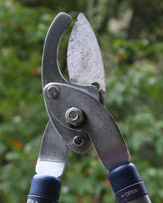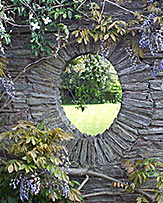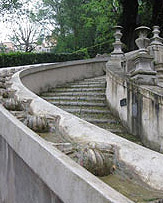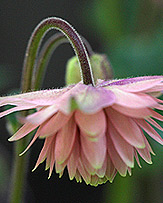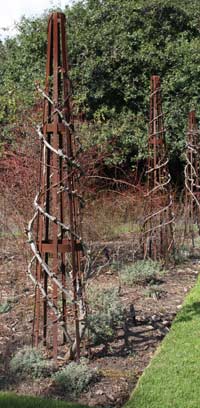
Plant Supports
Many plants require support, some when they are newly planted to prevent movement and rocking, this allows the roots to develop properly, others require permanent support.
Plant supports provide two main functions, firstly as a way of supporting ornamental plants as well as a range of fruit trees, vegetables and berry fruit.
Secondly as an aesthetic addition to the landscaped garden where they can provide height to the garden border or be used as a frame for screening purposes. They provide a means of supporting the weight of plants that would otherwise fall to the ground or snap, they also provide protection from wind damage.
Types of Plant Supports
As for material and styles, metal, willow, timber garden stakes, plant ties and wire are used to create :
- Garden Arches.
- Obelisks,.
- Rose Rings.
- Trellis.
- Plant Spirals.
All of which all form part of the useful group of plant supports.
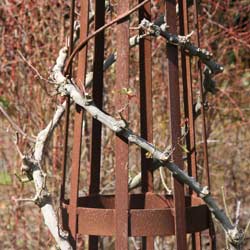
Plant supports for roses
Roses are a plant that come in a range of forms and in particular two of these forms need some sort of support to maintain optimum growth.
Climbing roses need some sort of framework that will allow them to show off their flowers, weeping roses need support to prevent the head of the rose from breaking at the graft under its own weight or due to winds.
Rose Rings
Rose rings are great for the weeping roses and come in a number of variations that will protect the rose from damage, they are similar and all have the same function, some are decorative as well.
Supports for climbing roses are a different matter, they vary from a wire attached to support poles to arches and obelisks that can form a decorative feature in the garden throughout the year as well as act as support or climbing frame.
The metal obelisks (pictured right) act as a frame for climbing roses and are placed in rows either side of a lawn to provide an avenue effect with roses cascading back down over the frame from spring through summer. The same effect can be had with timber structures.
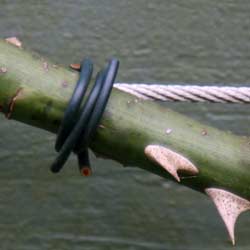
Attaching plants to supports
It is always best to use flexible garden ties to attach the plant to the outside of the support rather than 'weave' it through the support.
This makes it much easier to prune or remove the plant as required and also lessens the chance of the plant breaking apart the support as it grows.
Flexible ties also allow the plant to move without damaging the bark.
You May Also Like
